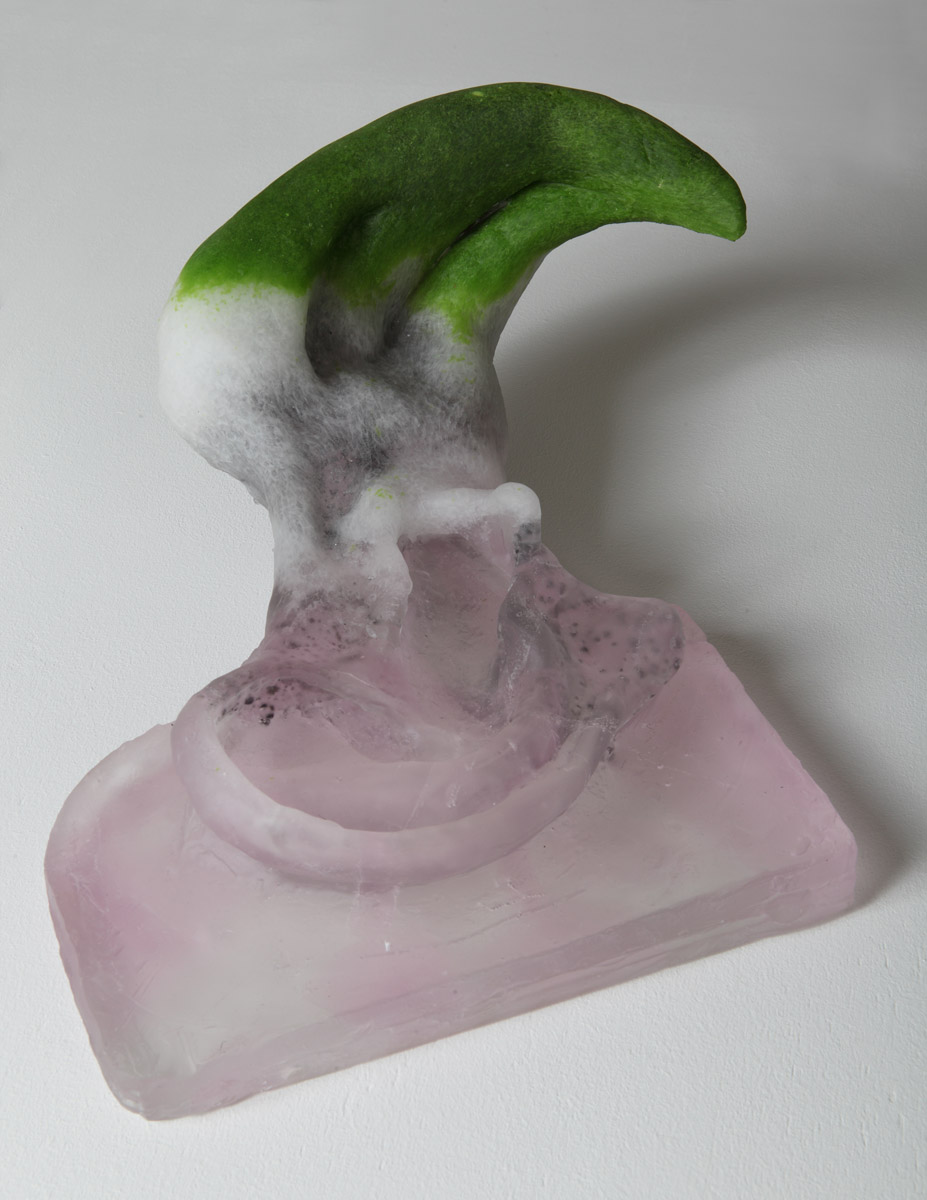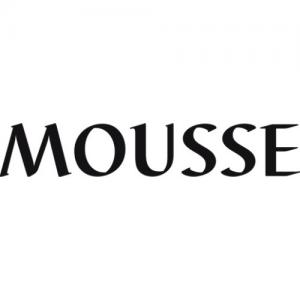Casey Kaplan


ESSAYS Mousse 10
Notes From the Underground: Diego Perrone
by Barbara Casavecchia
What is Boccioni’s mother doing in an ambulance? Who knows. Perhaps she’s schocked by the news that her son has died, in that cruel August of 1916. And in any case, you should ask it to Diego Perrone: he’s the one who thought up this subject for one of his most recent sculptures, exhibited at the CAPC in Bordeaux until September 16. In December, the Bordeaux show will be hosted by the MAMbo in Bononia, last leg of the gloomy journey which he got us accustomed to in the last years. The artist, who lives between Asti and Berlin, pretends to speak only about his private obsessions, but is able to talk about the present time as powerfully as the best reporter. And now that he turns back, reconsidering the Italian history (of art), this thing is getting more and more interesting.
Contortionists are monstruous. They show off an exaggerated, unbounded suppleness of movement that—oopsy-daisy—lets them bend within a 15x18x20 inche-sized box without breaking their backs—just as Daniel Browning Smith does, The Rubberboy, the world-famous “enterology” star. Muscles vibrating, spinal columns rolling up (backward or forward; the choice of direction needs to be decided from early childhood), ligaments lengthening by dint of the daily practice started at the age of three and carried out during a lifetime. And life, in spite of the urban legends (“They take snake oil” or “They’re genetically altered”), can reach venerable old ages, like the 72 of Ferry “The Frog Man” or the 80 of Dad Whitlark, on stage until the very end. A torment of Tantalus self-inflicted. The infernal “animal” starring in Diego Perrone’s video The first dad turns around with his own shadow. The mother bends her body in search of a shape. The second dad pounds his fist on the floor—which was presented in 2006 at the 4th Berlin Biennale and is now being exhibited at CAPC in Bordeaux together with La fusione della campana and La mamma di Boccioni in ambulanza—seems to be engaged in the same routine: against the background of a repetitive soundtrack that is as unnerving as nails scrapingagainst a blackboard, it takes on different positions but is never fully revealed as an intelligible form. It is, in Bataille’s words, “formless.” It opens and closes its pale amphibious-like legs that culminate in skinny dog-like paws, it then positions its head downward, and so on and so forth in a continuous, restless loop. It is a substance/sculpture in motion, seeking for a formal balance which does not happen, as whitish as the plaster blocks that inspired Boccioni’s idea of “plastic dynamism. ” What’s more, the “thing” is wrapped in the gloom of a space that is also elastic, flexible, and multidirectional—a contorted, and distorted, and frightful space that evokes the super-dark atmosphere of expressionist masterpieces like Wiene’s The Cabinet of Dr. Caligari, Boese’s Der Golem (both 1920) and Murnau’s Nosferatu (1922).
All of these works belong to the noble pantheon of the horror genre—a genre that admits the wildest distortion of reality and its conversion into an imaginary, uncertain and unstable parallel world, as surreal as Un chien andalu and its renowned aggression upon the perception of visible. This world fascinates the artist. On the subject of the landscape (and the “motionless acrobatics, a kind of steady static tension”) of his photographic series I pensatori di buchi (2002), Perrone writes: “I was adding dramatic power, I was able to control it and make it dark and morbid as I liked. At last, it had become the representation of an emotional state, of a human condition that shows its own uncovered nerves and, even if torn, constantly reacts with the same muscular tension. It was not like a scream, but rather like the clenching the fists. ” And during the conversation titled Pourrir ou Mourir (Rot or Die) that he had with Alex Cecchetti which was published on the first issue of the magazine “The Unready, ” Perrone compares—on the grounds of their common setting in the furthest provinces that leads to a lysergic mental isolation—The Texas Chainsaw Massacre (1973) by Hooper and Henkel with Pupi Avati’s 1976 film, The House with Laughing Windows (a 1998 work, La stanza dei cento re che ridono, echoes the title of the movie: it’s one hundred photographic prints of royal portraits where the king smiles in an ironical and threatening way). Another video, which is titled with two first names fit for a suburban story (Angela e Alfonso, 2002) and where the guy awkwardly crops the ear of his consenting yet screaming (on headphones) girlfriend, evokes another martyrized woman—another provincial backdrop (“It’s a sunny, woodsy day in Lumberton, North Carolina, so get those chainsaws out”) and another auricle fell victim to its unlucky fate—those of the opening scene of Blue Velvet by David Lynch, postmodern heir of the old-fashioned Expressionism. The zoom inside the auricle is a metaphor of the loss of equilibrium of the young protagonist that will search for a way out and for a growing opportunity in the exploration of darkness. During the above-mentioned conversation, Cecchetti points out, “Seen this close, an ear is a strange thing in itself. It looks like a labyrinth, a snail. (…) This functional microcosm appears to contain most of your iconographic material: holes, cavities, horns, furnaces, bells. Like a character out of Fantastic Voyage by Richard Fleisher, this ear has turned into undiscovered, alien territory. Rather as if these spaces become your mental studio. ” And Perrone replies: “I’m so unaware that I had never even thought about it! I must admit I don’t dislike the thought of living and working inside an ear or maybe inside its negative, which we could sum up as the form of sound. In fact, I am more interested in the ear as an environment and as a functional device than as a hearing organ.”
He seems to have a deep-rooted passion for ears—from Untitled (1995), one of his very first sculptures, composed of two earlobes carved in horn, to Due orecchie e un angolo, ironical title of one of his solo shows at Massimo De Carlo Gallery in Milan, where he exhibited two big sculptures and a large-sized photograph. Also on that occasion as well as in Bordeaux, the experiential space of the exhibition arose from the relationship between works and dimensions, as if an absent sound had been reflected from the first ones to the others, measuring the void (334 m/s) and physically fixing time and space. Sound originates from the vibrations of atoms and molecules of matter that oscillate, pulsed by waves of energy of different frequency, while the sound sensation is produced by the brain through its interface to the outside the ear. A cerebral affair, invisible and subjective, that can turn into hallucination—as in the case of tinnitus, a ringing or hissing sound heard within the ear that sometimes gets more and more intense untill it shallows every real sound and seals the sufferer in a deafening and autistic loop. It’s something like the tolling of a bell that never stops, or the siren of an ambulance that doesn’t move away. The huge vaulted space of CAPC, which is divided in the middle by a line of columns, is crossed by a 1000-inch-long black ramp that gets narrower on the top in perspective—in glossy resin, wet effect inclined plane where Perrone arranged The first dad… (on the highest point), La fusione della campana (at the bottom, in a different version from the one presented at the Fondazione Sandretto Re Rebaudengo in Turin) and right in the middle La mamma di Boccioni in ambulanza, a recent sculpture that seems to point out the new direction of his work, where the distinction between image and object is overcome. It was obtained by distorting both digitally and physically a picture downloaded from the Internet that portrays a team of paramedics working on the ambulance. Silk-screen printed on forex, it was heated to get it malleable and to roll up, compress and expand it in many directions, indicating a Cartesian, tri-dimensional part of space where (mental?) exercises of materiality can be tried. (La ginnastica mi spezza il cuore/ Exercise breaks my heart is the title of Perrone’s video that has been presented in Guarene in 2000 and is now exhibited at the Fondazione Sandretto for the group show “Silenzio/Silence” curated by Francesco Bonami. In this video, a female opera singer centers her trilling only on the vowels, exercising her vocal cords with vibrating contortions). The white chignon emerging behind the oxygen mask on the ambulance looks very much like the one of Cecilia Boccioni; at least this is how she appears in a picture taken in 1914 in the artist’s studio in Milan, Bastioni di Porta Romana 35. That is the place where we suppose she was hit and struck by the news that her son was dead, on August 16th 1916, fallen off a horse and then run over during the training. In those bare, almost monastic, yet bright rooms he had decided to try the shift from painting to sculpture, from bi- to three-dimensionality, re-inventing the technique that he didn’t have. He started modeling different materials—wood, clay, and iron wire—but he finally came to plaster and began to work it, not removing but adding, verifying the progress directly on the piece, layer by layer, while it was growing. We may call this process “form in progress, ” like the works of Perrone.